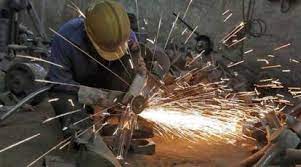India’s Factory Output Grows 5.2% in November: Highest Since May
India’s industrial output registered a significant growth of 5.2% in November, marking the highest increase in factory output since May of the previous year. This growth has been driven by an uptick in the manufacturing sector, mining, and electricity production. The figures were released by the National Statistical Office (NSO), showcasing the resilience of India’s industrial base despite global economic challenges.
Key Factors Behind the Growth
The growth rate for India’s industrial production is indicative of a recovery in the economy, as it surpasses market expectations. Manufacturing activities saw a robust performance, particularly in sectors like capital goods, which saw substantial growth. The mining sector also contributed significantly to this growth, with increased production in key raw materials such as coal and natural gas. Additionally, the electricity generation sector experienced positive growth, driven by rising demand for power during the winter months.
The Role of Government Policies
Government policies aimed at promoting manufacturing, including the “Atmanirbhar Bharat” (Self-Reliant India) initiative, are playing a pivotal role in bolstering industrial growth. Schemes focused on infrastructure development, MSME support, and ease of doing business have given a much-needed boost to factory output. These reforms are expected to continue fostering an environment conducive to further industrial growth, helping India maintain a strong position in the global manufacturing sector.

Why This News is Important
Implications for India’s Economic Growth
The 5.2% growth in factory output is significant because it reflects the health and resilience of India’s industrial sector. Economic growth driven by strong industrial performance helps mitigate the impact of slowdowns in other areas of the economy. For government exam aspirants, understanding the trends in industrial output is essential, as it is directly related to GDP growth, employment, and inflation—key topics covered in both current affairs and economic sections of the exams.
Impact on Policy and Future Projections
This growth is also important from a policy perspective. The rise in factory output suggests that India’s economic recovery post-pandemic is gaining momentum. The government and policymakers are likely to continue focusing on measures that stimulate industrial production and job creation. As the manufacturing sector recovers, it may lead to more investment opportunities, which will, in turn, generate more employment.
Relation to Other Key Economic Indicators
Examining the growth in factory output also provides insights into the performance of other key economic indicators, such as the Consumer Price Index (CPI) and the Wholesale Price Index (WPI). Understanding these interrelated factors will be crucial for government exam preparations, as they help assess India’s economic health and the effectiveness of monetary and fiscal policies.
Historical Context
India’s industrial output has witnessed fluctuating growth rates over the past decade. In 2020, industrial production faced a severe contraction due to the COVID-19 pandemic and nationwide lockdowns, causing significant economic disruption. However, with economic reforms and vaccination efforts, India’s industrial output started recovering in late 2020 and 2021.
Over the years, several initiatives like “Make in India” and “Atmanirbhar Bharat” were launched to promote self-reliance and encourage foreign investments in the manufacturing sector. These programs have gradually strengthened the foundation of India’s industrial base, enabling it to recover from setbacks and contribute positively to the nation’s economic growth.
The manufacturing sector’s importance is underscored by its contribution to India’s GDP and employment. Over the last two years, government measures, including boosting MSMEs, infrastructure projects, and simplifying regulations, have further enhanced the growth trajectory of factory output.
Key Takeaways from India’s Factory Output Growth
| S. No. | Key Takeaway |
|---|---|
| 1 | India’s factory output grew by 5.2% in November, marking the highest increase since May. |
| 2 | The growth was driven by manufacturing, mining, and electricity production. |
| 3 | Government policies like “Atmanirbhar Bharat” are key drivers behind industrial recovery. |
| 4 | This growth reflects a broader economic recovery post-pandemic and boosts GDP growth projections. |
| 5 | Understanding industrial growth is crucial for exams, as it impacts economic indicators like GDP and inflation. |
Important FAQs for Students from this News
What is the factory output growth in India for November 2024?
- India’s factory output grew by 5.2% in November 2024, marking the highest growth rate since May.
What sectors contributed to the growth of factory output in India?
- The growth was driven by the manufacturing, mining, and electricity production sectors, with significant contributions from manufacturing goods like capital goods, coal, and power generation.
How does the growth in factory output affect the Indian economy?
- The growth in factory output indicates a recovery in India’s industrial sector, which positively impacts GDP, employment, and economic stability. It reflects India’s economic resilience and the effectiveness of government reforms.
Which government policies are driving India’s industrial output growth?
- Policies like “Atmanirbhar Bharat,” infrastructure development programs, and support for MSMEs are key factors in boosting factory output and supporting industrial growth in India.
Why is understanding factory output growth important for government exams?
- Factory output growth is directly linked to key economic indicators such as GDP, inflation, and employment. Understanding these trends helps in answering questions related to India’s economic health in government exams.
Some Important Current Affairs Links


















